
Landscape Architecture Frontiers
Scope & Guideline
Cultivating knowledge in landscape architecture.
Introduction
Aims and Scopes
- Interdisciplinary Research:
The journal encourages collaboration across various disciplines, integrating perspectives from ecology, urban planning, sociology, and design to address complex landscape challenges. - Sustainability and Resilience:
A core focus is on sustainable practices that enhance ecological health and resilience in urban and rural landscapes, addressing climate change and environmental degradation. - Social Justice and Inclusivity:
The journal emphasizes landscape justice, exploring how design and planning can promote equity and access for marginalized communities, fostering inclusive public spaces. - Innovative Design Practices:
It showcases cutting-edge design models and strategies that incorporate nature-based solutions and adaptive management to improve urban environments and public health. - Cultural and Historical Context:
Research often reflects on the cultural significance of landscapes, examining how historical narratives and local identities influence contemporary landscape architecture.
Trending and Emerging
- Landscape Justice:
An increasing number of papers focus on landscape justice, exploring how landscape architecture can address social inequities and promote inclusive public spaces for diverse communities. - Nature-Based Solutions:
There is a notable trend towards research on nature-based solutions that leverage natural processes to address urban challenges such as flooding, biodiversity loss, and climate adaptation. - Digital Tools and Technologies:
Emerging themes include the use of digital tools and technologies, such as GIS, AI, and digital twinning, to enhance design processes and facilitate data-driven decision-making in landscape architecture. - Health and Well-Being:
Research is increasingly focusing on the relationship between landscape design and human health, emphasizing how green spaces can enhance mental and physical well-being, particularly in urban settings. - Ecological Restoration:
The journal is witnessing a rising interest in ecological restoration practices, particularly in urban environments, to restore natural habitats and improve ecosystem services.
Declining or Waning
- Traditional Landscape Aesthetics:
There appears to be a waning interest in purely aesthetic approaches to landscape design, with a shift towards functional and ecological considerations. - Static Urban Planning Models:
The reliance on traditional, static planning models is decreasing as the field moves towards dynamic, adaptable strategies that respond to changing environmental conditions. - Non-Participatory Design:
Themes that do not prioritize community engagement and participatory design practices are becoming less prominent, as the field increasingly values stakeholder involvement. - Historical Preservation without Adaptation:
While historical preservation remains important, there is a decreasing emphasis on preserving landscapes in a static state without considering adaptive reuse and ecological integration. - Singular Focus on Urban Landscapes:
There is a noticeable decline in publications focusing solely on urban landscapes, as the journal increasingly addresses broader rural and ecological landscapes.
Similar Journals
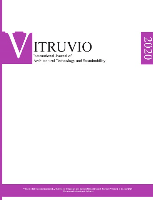
VITRUVIO-International Journal of Architectural Technology and Sustainability
Fostering collaboration for a sustainable built environment.Welcome to the VITRUVIO-International Journal of Architectural Technology and Sustainability, a leading open-access journal published by UNIV POLITECNICA VALENCIA, EDITORIAL UPV since 2015 and based in Spain. With its ISSN 2444-9091, this journal is dedicated to advancing the field of architectural technology and sustainability, providing a vital platform for researchers, professionals, and students alike. The journal has made significant strides in the academic landscape, achieving a Q3 ranking in Architecture and a Q4 ranking in Building and Construction for 2023. It features a diverse range of scholarly articles that explore innovative practices, cutting-edge research, and sustainable solutions in architecture. With a Scopus ranking placing it at #70/189 in Architecture and #161/223 in Building and Construction, it is positioned within the 63rd percentile and 28th percentile respectively, demonstrating its increasing impact in these vital fields. We invite you to engage with our content and contribute to the ongoing discourse around sustainability in architectural practice.

Materia Arquitectura
Connecting minds to redefine the future of design.Materia Arquitectura, published by the Universidad San Sebastián, Facultad de Arquitectura y Arte in Santiago, is a leading open-access journal dedicated to the dynamic field of architecture. With its ISSN 0718-7033, this journal has established itself as a vital platform for disseminating cutting-edge research, innovative design practices, and critical discourse surrounding architectural theory and education since its transition to open access in 2017. The journal's commitment to fostering academic collaboration and knowledge sharing is reflected in its inclusive approach, welcoming contributions from researchers, practitioners, and students alike. By providing free and worldwide access to its content, Materia Arquitectura significantly enhances the visibility and impact of architectural scholarship, making it an essential resource for anyone invested in the future of architecture and design.

Journal of Urban Ethnology
Illuminating the Dynamics of Urban ExistenceJournal of Urban Ethnology, published by the Polish Academy of Sciences, Institute of Archaeology & Ethnology, is a premier scholarly journal focused on the multifaceted dimensions of urban life through an ethnographic lens. With a commitment to advancing the field of urban studies, this journal welcomes original research articles, case studies, and theoretical discussions that explore the rich tapestry of urban communities, cultural practices, and social dynamics. The journal plays a crucial role in fostering interdisciplinary dialogue among anthropologists, sociologists, urban planners, and cultural researchers, making it an invaluable resource for professionals, students, and scholars alike. While it currently operates under a traditional access model, the journal strives to contribute to an understanding of contemporary urban challenges and innovations, supporting the quest for sustainable and equitable urban futures. The ISSN for the journal is 1429-0618, ensuring its recognition in global academic databases.
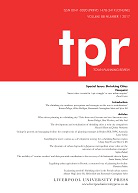
TOWN PLANNING REVIEW
Connecting Researchers and Practitioners in Urban StudiesTOWN PLANNING REVIEW is a prestigious academic journal published by Liverpool University Press, focusing on pivotal research in the fields of urban studies and planning. Established in 1977, this journal has become a leading platform for the exploration of contemporary urban challenges and innovative planning solutions, aligning with its impressive Q1 rankings in both Geography, Planning and Development and Urban Studies. With a Scopus rank of 73 out of 279 in Urban Studies, it holds a strong presence in the academic community, making significant contributions to the scholarship and practice of town planning. Although it is not an open-access journal, it continues to reach a global audience by disseminating high-quality, peer-reviewed research. Researchers, professionals, and students interested in advancing their understanding of urbanization processes, planning methodologies, and policy implications will find TOWN PLANNING REVIEW an invaluable resource as it bridges theoretical insights and practical applications in the dynamic landscape of urban development.

Manzar-The Scientific Journal of Landscape
Transforming Perspectives on Landscape ArchitectureWelcome to Manzar - The Scientific Journal of Landscape, a premier academic outlet focusing on the interdisciplinary exploration of landscape studies, offering insights into art, architecture, and urbanism. Published by the NAZAR RESEARCH CENTER, this journal has been an Open Access platform since 2009, fostering free exchange of knowledge and supporting the dissemination of research in landscape architecture and urban studies. Renowned for its commitment to advancing scholarly dialogue, Manzar provides an essential resource for researchers, professionals, and students captivated by the complexities and aesthetics of landscapes. With an ISSN of 2008-7446 and E-ISSN of 2008-2169, the journal presents a diverse range of articles that investigate the interactions between natural and built environments. Located in Tehran, Iran, Manzar not only enhances local discourse but also contributes globally to the field of landscape studies.
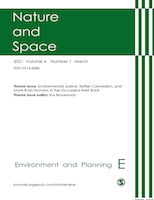
Environment and Planning E-Nature and Space
Connecting environmental insights with planning excellence.Environment and Planning E-Nature and Space is a prestigious journal published by SAGE Publications Inc, focusing on the critical intersection of environmental studies and spatial planning. With an impressive Impact Factor reflecting its academic influence and a Q1 quartile ranking in several categories including Development and Geography, Planning and Development, this journal serves as a vital resource for researchers, professionals, and students interested in contemporary issues surrounding nature, landscape conservation, and environmental policy. Spanning a converged period from 2018 to 2024, it publishes rigorously peer-reviewed articles that aim to advance knowledge and foster discussions on practices that influence our natural and developed environments. The journal's commitment to high-quality scholarship is further evidenced by its strong performance in Scopus rankings, standing within the top percentiles in its fields. Although it is not an open-access journal, the depth and relevance of its content make it an essential read for those dedicated to shaping sustainable futures.

Revista de Direito da Cidade-City Law
Bridging Disciplines for a Better Urban ExperienceRevista de Direito da Cidade-City Law is an esteemed academic journal published by the Universidade do Estado do Rio de Janeiro, dedicated to exploring modern challenges in urban law and governance. With its ISSN 2317-7721 and E-ISSN 2317-7721, this open-access journal has been committed to disseminating critical research since 2011, fostering an inclusive dialogue on legal frameworks that shape urban spaces in Brazil and beyond. The journal serves as a vital platform for researchers, professionals, and students seeking to engage with interdisciplinary studies that bridge law, urban planning, and public policy. Published in Rio de Janeiro, the journal reflects the city's dynamic legal landscape and is a key resource for anyone interested in the evolution of city laws amidst rapid urbanization and societal change.
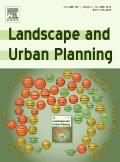
LANDSCAPE AND URBAN PLANNING
Navigating the complexities of urbanization and conservation.Landscape and Urban Planning is a premier academic journal published by Elsevier, dedicated to the interdisciplinary study of urban environments and landscape management. With a strong focus on ecological, managerial, and policy-driven aspects of urban and landscape planning, this journal has achieved a remarkable recognition within its field, boasting a Q1 classification in multiple categories, including Ecology, Urban Studies, and Nature and Landscape Conservation, as evidenced by its impressive Scopus rankings. Researchers can access state-of-the-art studies and innovative methodologies that address contemporary challenges in urbanization and environmental sustainability. Since its inception in 1986, the journal has been instrumental in shaping the discourse on landscape and urban planning, making it an essential resource for academics, professionals, and students alike who seek to contribute to the sustainable development of urban areas. The journal's accessible content, backed by a strong editorial board and rigorous peer-review process, ensures that published findings remain at the forefront of research in these critical disciplines.
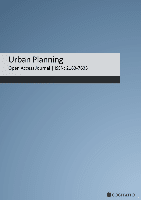
Urban Planning
Pioneering solutions for tomorrow's urban challenges.Urban Planning is a leading academic journal published by COGITATIO PRESS, devoted to advancing the field of urban studies through rigorous research and innovative practice. Established as an Open Access journal in 2016, it offers a platform for scholars and practitioners alike to disseminate knowledge on urban development, spatial planning, and community engagement. With an impressive ranking in the Q1 category for Urban Studies and a notable Scopus rank of #71 out of 279, it reflects the journal's commitment to excellence and influence within its discipline. Based in Lisbon, Portugal, and dedicated to a global audience, Urban Planning encourages interdisciplinary collaboration and seeks to address the pressing challenges faced by urban areas, making it an essential resource for researchers, professionals, and students passionate about shaping sustainable cities. The journal, which contributes to the academic discourse through a robust review process and encourages contributions that engage diverse voices, is set to converge its insights from 2016 to 2025, solidifying its role as a pivotal resource in the urban studies field.

Acta Scientiarum Polonorum-Formatio Circumiectus
Pioneering research at the intersection of nature and technology.Acta Scientiarum Polonorum-Formatio Circumiectus is a distinguished open-access journal published by WYDAWNICTWO UNIWERSYTETU ROLNICZEGO HUGONA KOLLATAJA KRAKOWIE, dedicated to advancing knowledge in the fields of ecological modeling, environmental engineering, nature and landscape conservation, and water science and technology. With a commitment to accessibility since its inception in 2006, this journal provides a platform for researchers, professionals, and educators to disseminate their findings to a global audience. Although currently categorized in the Q4 quartile across various ecological disciplines, the journal's aim is to foster critical discussions and innovative approaches to pressing environmental challenges. The journal is based in Poland, and its scope encompasses a wide array of research areas pertinent to contemporary environmental studies. Acta Scientiarum Polonorum serves as an essential resource in its field, encouraging empirical research and theoretical advancements that collectively contribute to sustainable development and environmental stewardship.